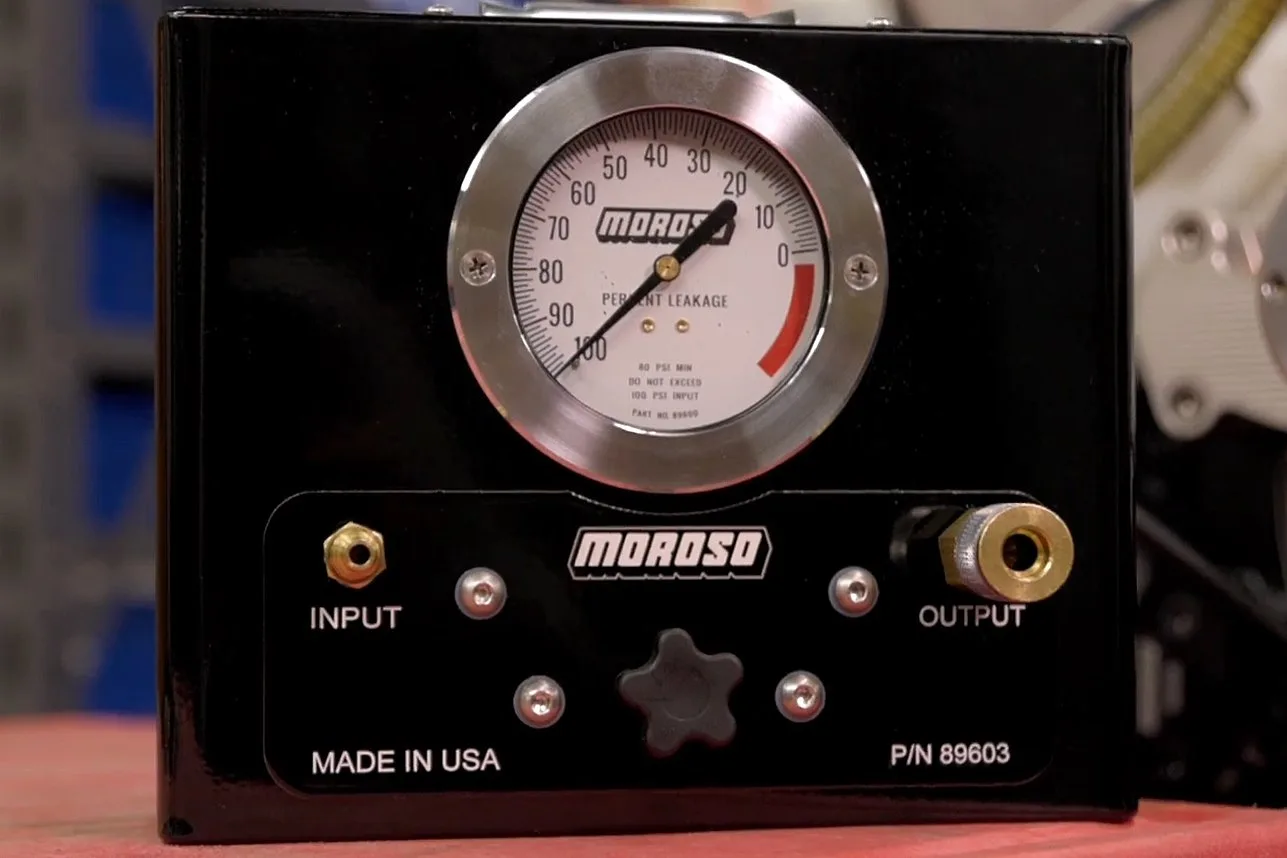When checking the health of an engine, there are several tests you can perform. Some, like used oil analysis, can chemically analyze what’s in your oil to tell you what’s failing (or not failing). Other tests are mechanical, like the compression test and cylinder leak-down test. Today we’re going to be discussing the venerable leak down test, and not only explaining how it’s performed, but what it can tell you,
The premise of a leak-down test is simple. You fill one of your cylinders with compressed air and measure how much of it is leaking out of the cylinder. Sounds simple, right? Well, not quite THAT simple, as Moroso’s Scott Hall explains in the above video. First, is that you need a specific leak-down tester to perform the test.
Moroso’s leak-down tester (P/N: 89603) looks a little different from most of the other leak-down testers you’ll find on the market, and that’s by design. The stand-up case version of the tool is designed to be easier to use than a handheld gauge. It’s also designed to be easier to read, with a large 3.5-inch gauge face in the center of the tester. The Moroso unit is calibrated to with 0.5-percent accuracy in-house at Moroso, and can be recalibrated if there’s any issues.
What a leak down tester does, is compare the line pressure of an air source to the flowing pressure when the cylinder is pressurized. The air source is connected to the tester and then the tester attached to the spark plug hole of the cylinder you are testing. The pressure differential is displayed as a percentage, between 0 and 100. If your tester were to have dual gauges in PSI instead, you would calculate the leak-down percentage by comparing the readings from the two gauges.
The actual process for testing the engine is straightforward. The first step is to make sure the engine is at (or very near) top dead center on the compression stroke. This will ensure that both valves are closed and the cylinder is in it’s most airtight configuration. Then, you simply connect the leak-down tester, pressurize the tester with air, and take the reading.
However, there is more that can be gleaned than a simple leak-down percentage. You can check several points in the engine for air, to determine the leak path of the pressurized air. The first is the exhaust port. If you detect air from the exhaust…
Click Here to Read the Full Original Article at DragzineDragzine…

